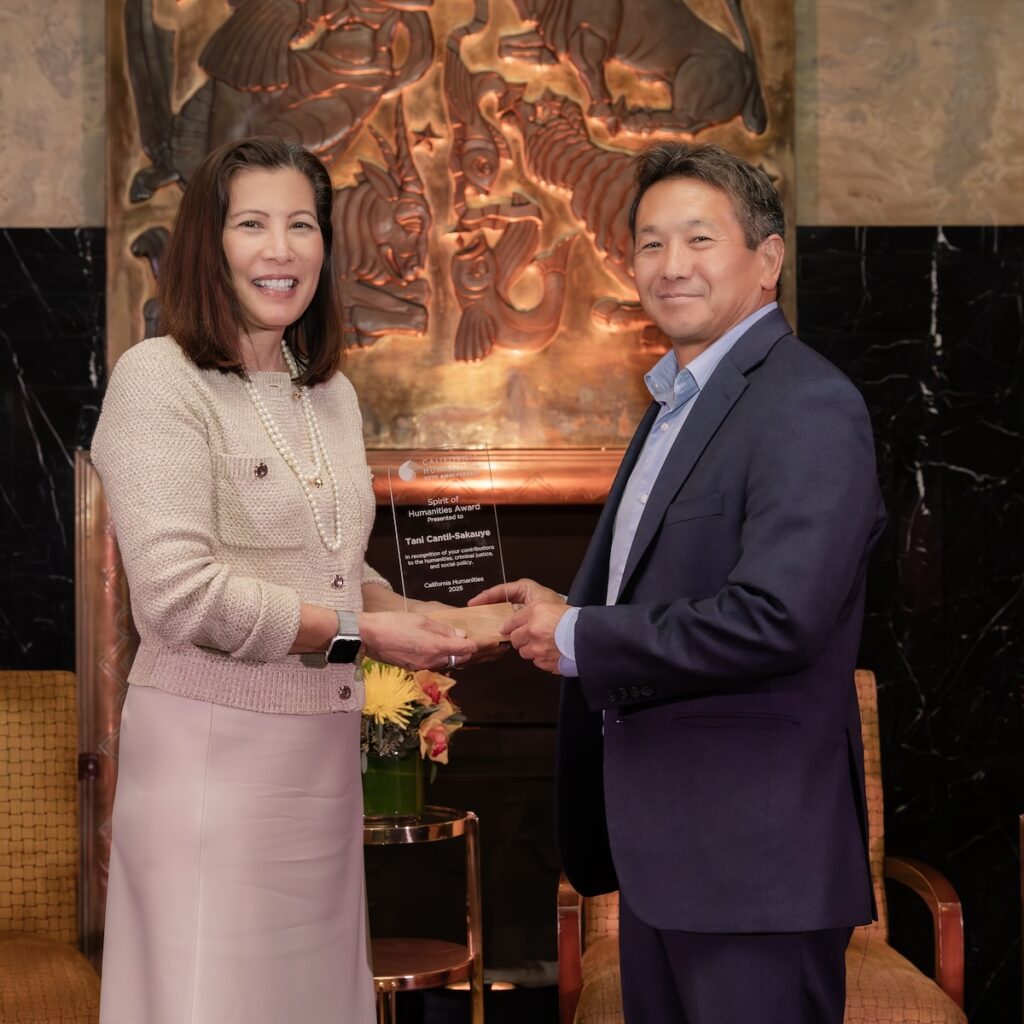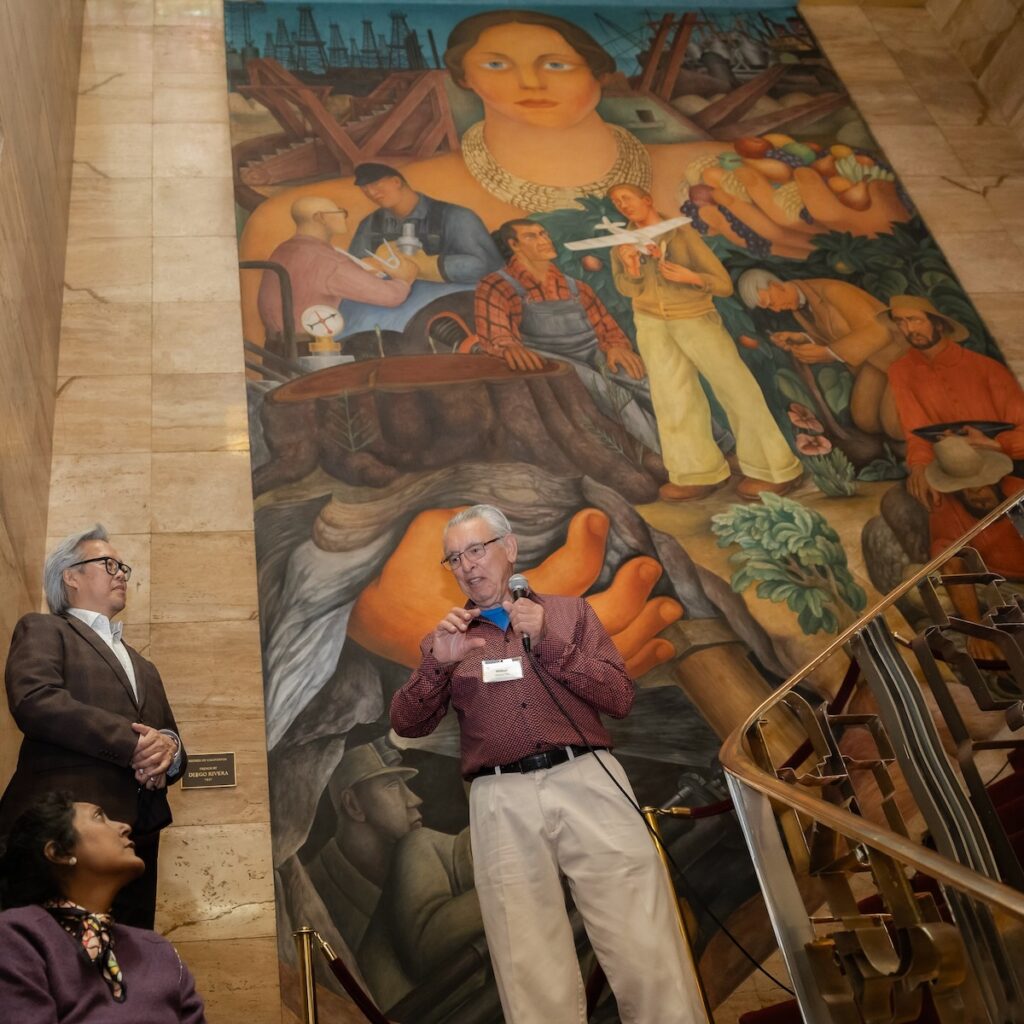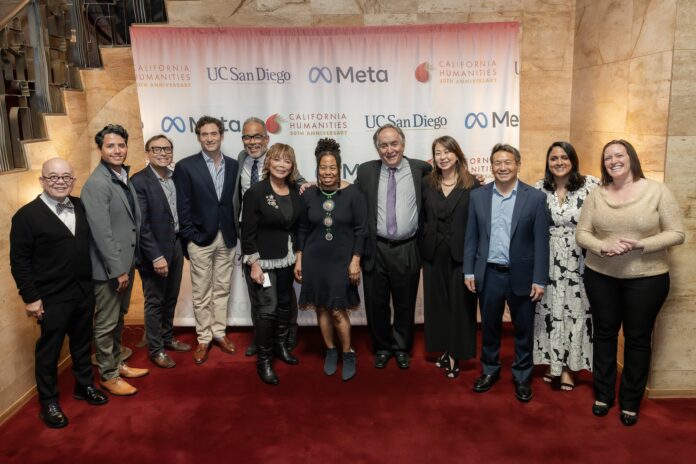As I sat down this weekend to write fondly of last month’s California Humanities‘ 50th anniversary celebration, which featured a who’s who of statewide arts and culture organizations, most of the National Endowment for the Humanities staff was put on immediate leave, and the Trump administration canceled most of its grants—in order to redirect the money to “supporting President Trump’s priorities.”
Venerable nonprofit California Humanities is an independent partner of the NEH, and the full fallout of those moves has yet to be seen. But while we await the imposition of mandatory golfing and womanizing lessons in the nation’s grade schools, it’s worth shining up CalHum’s extensive work providing grants and educational programs since 1970, aiming “to connect Californians to ideas and one another in order to understand our shared heritage and diverse cultures.” And hope it can continue for a half century more.
The 50th anniversary celebration’s setting was itself a fabulous argument for the elevation of art and knowledge in every day life: The Art Deco-adorned upper rooms of the SF City Club, featuring Diego Rivera’s brilliant mural “Allegory of California” illuminating the stairwell between the tenth and eleventh floors, are a lesson in action transformed into beauty, and vice versa. The affair was star-studded yet kept a family-feeling vibe. Attorney General Rob Bonta was there, as was California State librarian Greg Lucas (yes I fan-boyed out) among other humanities luminaries. Chef Justice of California Tani Cantil-Sakauye received a special award, and Will Maynez of the Diego Rivera Mural Project at City College was on-hand for any questions about the art.

I admit that even as someone who has covered the arts scene here for 30 years here, California Humanities is such a huge operation that it seems almost ambient in its deep effects on education, filmmaking, exhibitions, and narrative storytelling. I always saw the name on grant acknowledgements and end credits, but I never really leapt into researching the org itself. It was eye-opening to learn about its California Documentary Project and Library Innovation Lab, which highlight local stories from every part of the state, or its Civics + Humanities Middle Grade Grants pilot program, which is helping bring those (sorely needed!) subjects back to schools. CalHum is a huge bulwark in the “culture wars” that threaten to drain all flavor and color from civic life.
With the rising rage in humanities circles about the rise of AI, much of which is built on stolen art and writing and threatens arts jobs from graphic design to teaching (one of my side gigs, in fact, replaced me with AI), the event chose to take a direct yet upbeat approach in its centerpiece panel, which asked “How Can the Humanities Revolutionize Artificial intelligence?,” creatively inverted the usual question, and giving humanities the upper hand in technological consideration for once. And while the AI bit carried a whiff of donor service (META was among the event’s sponsors), it actually provided some fresh and thought-provoking moments.

Panelists Damon Horowitz (an AI ethicist, entrepreneur, and philosopher—not sure how he reconciles all those), Michele Elam (a humanities professor at Stanford who specializes in race issues in technology), and moderator Rachael Myrow from KQED held a brief but lively conversation that invoked Greek philosophy—Horowitz talked about looking to Heraclitus‘ admonition to find novel ways to adjust to change by living “within” it—and considerations of how the legacy of humanities education can combat the exclusionary aspects and cultural desiccation often baked into artificial intelligence by virtue of its mostly white male programmers.
In a time of huge uncertainty around the future of art in this country—will the United States even *have* art in the coming years?—the celebration was heartening. I almost burst into tears when Horowitz mentioned Roland Barthes’ theory of the “death of the author” in regards to how much of the effects of Artificial Intelligence have already been theorized, or when Myrow asked a piercing question about how corporate influence can impede artistic progression through its total control of technology. You do not often hear these things in public discourse, let along at a gala event! Ah, intellectual respite and the unfettered spirit of inquiry, I remember those.
Perhaps most touching was when Bonta and Cantil-Sakauye talked about their childhood connections in the Filipinx community of Sacramento, and their ties to new California Humanities CEO Rick Noguchi. Noguchi is a recent addition to the CalHum team, a poet, children’s book author, and avid surfer who was formerly the Chief Operating Officer at the Japanese American National Museum in Los Angeles. If there’s anyone who embodies the broad scope of humanities in California, from sports to poetry to history, he’s it.
When I spoke with him on the phone before the celebration, Noguchi—along with the rest of the humanities community—were just absorbing Trump’s first destructive salvo as he decimated national DEI programs (and had begun to use them as an excuse to decimate independent organizations). “One of the big reasons the board brought me on was to center equity, to operationalize equity work with guiding set of values.” he said. “We’re an incredibly diverse organization supporting initiatives in all 52 of California’s congressional districts, so this is something we really want to get right. As we celebrate the past 50 years of amazing work, it’s great to have such a solid foundation to build the future on, despite what’s happening politically.”
When asked about any threats from the administration that might make their equity mission impossible, Noguchi seemed serious yet positive. “We have to adhere to Executive Orders, but fortunately we are in a very unique position, being from California. When it comes to telling the stories of women, communities of color, LGBTQ+ people, and other groups, California is already diverse to begin with. There’s no way not to tell those stories. We can’t help it!”





